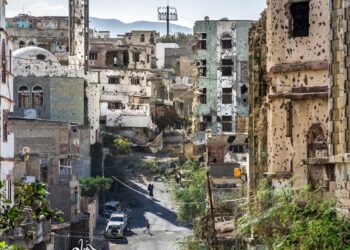The Center said in its monthly report that its field team was able to document the killing of 11 civilians, including 3 children.
Houthi militias killed four of them, including two children, where two civilians were killed, including a child shelled by various shells, and killed a sniper belonging to the militia another child, while the explosion of a landmine planted by that militia also killed a civilian.
Three civilians were killed by tribal gunmen in a clash between them on a piece of land, and two civilians were killed by gunmen belonging to the government army, and killed a child running over a military crew, while another civilian was shot dead by unidentified gunmen.
PCHR’s team was able to monitor the injury of 15 civilians, including a woman and two children.The Houthi militia injured 10 of them, including a woman. Seven civilians, including two children, were injured by Houthi militia shells. Three other civilians, including a woman, were injured by landmines planted by the militia.
Four civilians were wounded by tribal gunmen, and one civilian by unidentified gunmen.
The Panel documented 3 cases in which freedom of opinion and expression were violated, one caused by unknown gunmen and the other by gunmen from factions of the Government Army.The team also documented two assaults by unknown gunmen, and monitored 25 cases of violations involving public and private property, during which two buildings were partially damaged as a result of the ongoing shelling of Houthi militia.
In addition, 4 private houses were damaged and 9 others were partially damaged, 3 private vehicles were destroyed and 7 others were partially damaged as a result of the shelling of the militias.
The report listed the areas and residential areas that have been heavily bombed by the coup militia with various medium and heavy weapons such as Bir Pasha, as well as residential neighborhoods north and west of the city and the central prison district with anti-aircraft, mortar and artillery.
The report listed the areas and residential areas that have been heavily bombed by the coup militia with various medium and heavy weapons such as Bir Pasha, as well as residential neighborhoods north and west of the city and the central prison district with anti-aircraft, mortar and artillery.
The Houthi militia also shelled the Asaifra neighborhood from its positions in Jabal al-Wahsh, north of the city.
The report pointed to the return of the spread of dengue fever under the siege of the city of Taiz negatively affected the health situation and the scarcity of medicines and medical solutions.
The report also tackled the challenges that impede the imposition of security stability in the liberated areas and that reinforce the chaos and security imbalances despite the efforts of the security committee and the authority to normalize the situation in those areas.
The report said that several phenomena of attacks and internal conflicts emerged during October and amounted to the killing of two of the guard of the governor of the province, Nabil Shamsan in early October by unknown gunmen.
The report also referred to the civil protest movements witnessed in the city against the practices of power and government and armed factions of multiple parties and currents, and included protests media campaigns against corruption.They demanded the activation of the role of state institutions and the need to stop internal conflicts.It also called for a number of vigils and statements to evacuate schools, institutes and educational buildings from the militants and empty the weapons stored in them so as not to endanger the lives of students, especially the Industrial Technical Institute and a number of other schools.







